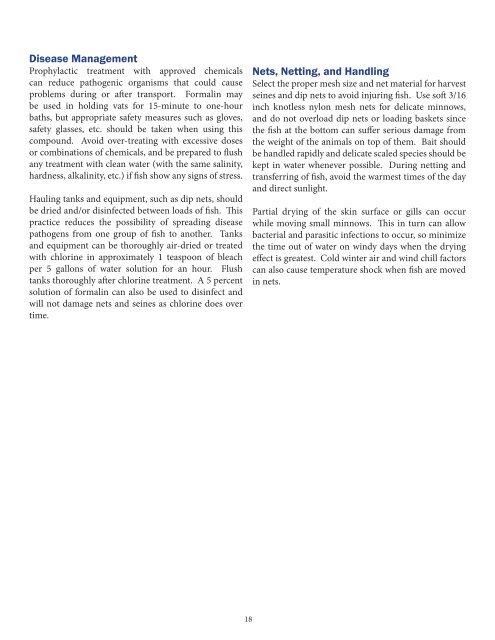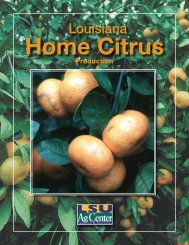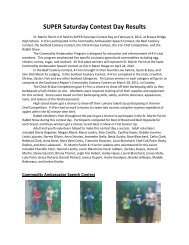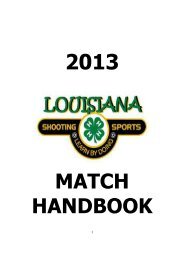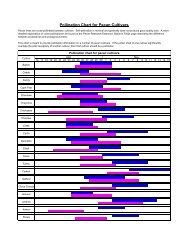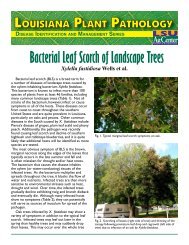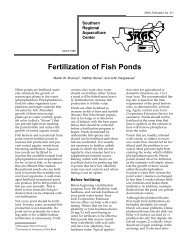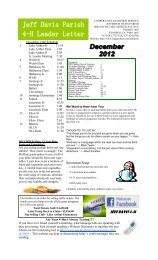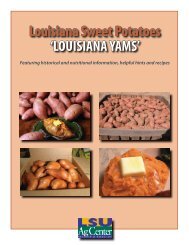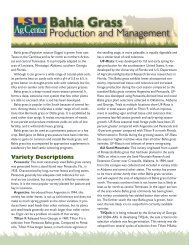Cocahoe Minnow - The LSU AgCenter
Cocahoe Minnow - The LSU AgCenter
Cocahoe Minnow - The LSU AgCenter
You also want an ePaper? Increase the reach of your titles
YUMPU automatically turns print PDFs into web optimized ePapers that Google loves.
Disease Management<br />
Prophylactic treatment with approved chemicals<br />
can reduce pathogenic organisms that could cause<br />
problems during or after transport. Formalin may<br />
be used in holding vats for 15-minute to one-hour<br />
baths, but appropriate safety measures such as gloves,<br />
safety glasses, etc. should be taken when using this<br />
compound. Avoid over-treating with excessive doses<br />
or combinations of chemicals, and be prepared to flush<br />
any treatment with clean water (with the same salinity,<br />
hardness, alkalinity, etc.) if fish show any signs of stress.<br />
Hauling tanks and equipment, such as dip nets, should<br />
be dried and/or disinfected between loads of fish. This<br />
practice reduces the possibility of spreading disease<br />
pathogens from one group of fish to another. Tanks<br />
and equipment can be thoroughly air-dried or treated<br />
with chlorine in approximately 1 teaspoon of bleach<br />
per 5 gallons of water solution for an hour. Flush<br />
tanks thoroughly after chlorine treatment. A 5 percent<br />
solution of formalin can also be used to disinfect and<br />
will not damage nets and seines as chlorine does over<br />
time.<br />
18<br />
Nets, Netting, and Handling<br />
Select the proper mesh size and net material for harvest<br />
seines and dip nets to avoid injuring fish. Use soft 3/16<br />
inch knotless nylon mesh nets for delicate minnows,<br />
and do not overload dip nets or loading baskets since<br />
the fish at the bottom can suffer serious damage from<br />
the weight of the animals on top of them. Bait should<br />
be handled rapidly and delicate scaled species should be<br />
kept in water whenever possible. During netting and<br />
transferring of fish, avoid the warmest times of the day<br />
and direct sunlight.<br />
Partial drying of the skin surface or gills can occur<br />
while moving small minnows. This in turn can allow<br />
bacterial and parasitic infections to occur, so minimize<br />
the time out of water on windy days when the drying<br />
effect is greatest. Cold winter air and wind chill factors<br />
can also cause temperature shock when fish are moved<br />
in nets.


